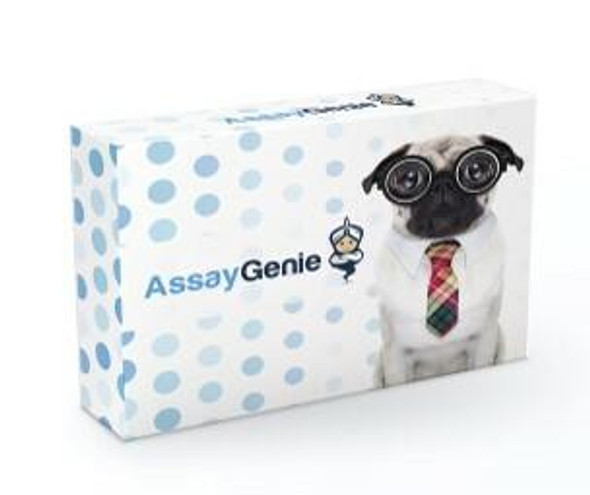Description
Human Glucagon PharmaGenie ELISA Kit (SBRS0028)
| Product SKU: | SBRS0028 |
| Size: | 96T |
| Application: | Cross Reactivity: This ELISA kit shows no cross-reactivity with any of the cytokines tested: Ghrelin, Nesfatin, Angiotensin II, NPY and APC. |
| Uniprot: | P01275 |
| Gene ID: | 2641 |
| Gene Names: | GCG |
| Synonyms: | Glucagon [Cleaved into: Glicentin Glicentin-related polypeptide (GRPP) Oxyntomodulin (OXM) (OXY) Glucagon Glucagon-like peptide 1 (GLP-1) (Incretin hormone) Glucagon-like peptide 1(7-37) (GLP-1(7-37)) Glucagon-like peptide 1(7-36) (GLP-1(7-36)) Glucagon-like peptide 2 (GLP-2)] |
| Target Species: | Human, Mouse, Rat |
| Compatible Sample Types: | Cell Culture Supernatants and Serum |
| Design Principle: | Competition-based |
| Method of Detection: | Colorimetric |
| Quantitative/Semi-Quantitative: | Quantitative |
| Range: | 1-1,000 pg/ml |
| Sensitivity: | 4.77 pg/ml |
| Recommended Dilution: | Human: 2X, Mouse: 2X, Rat: 2X |
| Storage/Stability: | Standard, Biotinylated Glucagon peptide, and Positive Control should be stored at -20°C after arrival. Avoid multiple freeze-thaws. The remaining kit components may be stored at 4°C. Opened Microplate Wells and antibody (Item N) may be stored for up to 1 month at 2 to 8°C. Return unused wells to the pouch containing desiccant pack and reseal along entire edge. |
- Pre-Coated 96-well Strip Microplate
- Wash Buffer
- Standard Peptide
- Assay Diluent(s)
- Biotinylated Peptide
- HRP-Streptavidin
- TMB One-Step Substrate
- Stop Solution
- Assay Diagram
- Positive Control Sample
- Capture Antibody
- Technical Manual
Other materials and equipment required:
The Assay Genie Human Glucagon PharmaGenie ELISA Kit (SBRS0028) will require other equipment and materials to carry out the assay. Please see list below for further details.
- Distilled or deionized water
- Precision pipettes to deliver 2 ul to 1 ml volumes
- Adjustable 1-25 ml pipettes for reagent preparation
- 100 ml and 1 liter graduated cylinders
- Tubes to prepare standard and sample dilutions
- Orbital shaker
- Aluminum foil
- Saran Wrap
- Absorbent paper
- Microplate reader capable of measuring absorbance at 450nm
- SigmaPlot software (or other software that can perform four-parameter logistic regression models)
- Prepare all reagents, samples and standards as instructed.
- Add 100 ul detection antibody to each well.
- Incubate 1.5 h at RT or O/N at 4°C.
- Add 100 ul standard or sample to each well.
- Incubate 2.5 h at RT.
- Add 100 ul prepared streptavidin solution.
- Incubate 45 min at RT.
- Add 100 ul TMB One-Step Substrate Reagent to each well.
- Incubate 30 min at RT.
- Add 50 ul Stop Solution to each well.
- Read plate at 450 nm immediately.
Glucagon is a 29-amino acid peptide hormone secreted by the pancreas. Its function is to raise blood glucose levels to opposing the effect of insulin, which lowers blood glucose levels. Glucagon is synthesized and secreted from alpha cells of the endocrine portion of the pancreas. In rodents, the alpha cells are located in the outer rim of the islet. However, alpha cells in human pancreas are distributed throughout the islet. Glucagon and insulin are part of a feedback system that keeps blood glucose levels at a stable level. The pancreas releases glucagon when glucose levels fall too low. Glucagon causes the liver to convert stored glycogen into glucose, which is released into the bloodstream. Glucagon raises blood glucose levels. High blood glucose levels stimulate the release of insulin. Insulin allows glucose to be taken up and used by insulin-dependent tissues. Glucagon has important clinical applications. Abnormally-elevated levels of glucagon may be caused by pancreatic tumors, such as glucagonoma, with symptoms including necrolytic migratory erythema, reduced amino acids, and hyperglycemia. It may occur alone or in the context of multiple endocrine neoplasia type 1 (MENI).






